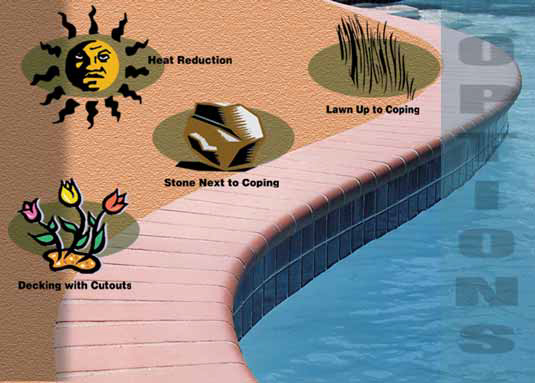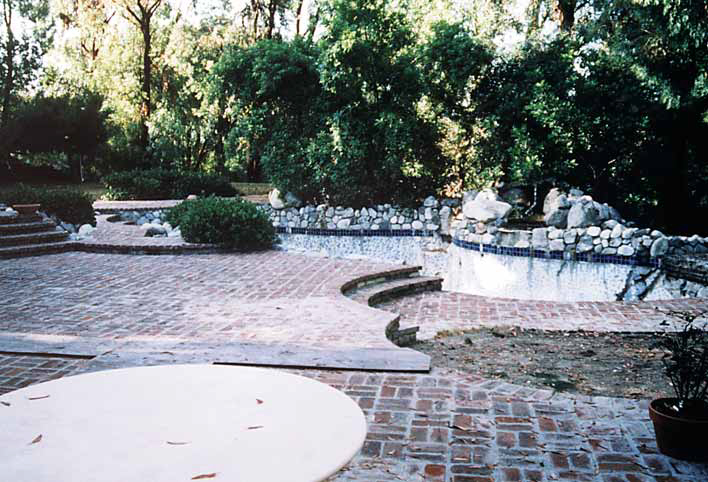materials
Looking for inspiration in an urban environment can leave a designer with precious few useful references. Take downtown Chicago, for example, where our indigenous waterfeature is Lake Michigan and our public art is too often plopped in the middle of concrete plazas. Be that as it may, I do my part by trying to introduce both water and art into my projects. So I was thrilled to be retained by Mary O'Shaughnessy, owner of the Wood Street Gallery in Chicago, to design a sculpture garden. I knew it would give me the chance to create a balanced, beautiful space - even though I also knew the job wouldn't be easy. What she wanted was a garden environment in which she could display and sell contemporary American sculpture - a place that would help clients visualize the way the art might look in their own gardens. As we dug deeper, we uncovered additional goals: It needed to be a space that would accommodate a changing variety and number of pieces; it had to be functional for large parties; and it had to incorporate and acknowledge the garden's urban neighborhood while still providing a sense of enclosure for gallery visitors (and, of course,
In February 1999, the cover photo on the premiere issue of WaterShapes showed a steel cage for a subgrade piling being lowered into the ground. That image was taken from a feature article by designer/builder David Tisherman, the first of many that he has contributed to the magazine. In that article and in another that followed in April 1999, he detailed the design and construction of an elaborate residential swimming pool project that he
A little more than 100 years ago, in the first big growth spurt in the use of electricity, the harsh realities of the hazards involved with it quickly became apparent. Fires were common occurrences everywhere electricity was distributed, and serious (and often fatal) accidents made daily headlines wherever people came into contact with this wondrous phenomenon. Virtually all of the electric works being built in those early days were set up to provide lighting for a population tired of living in the gloom of candles, gas lamps and coal-oil lanterns. That meant that
Your clients are thrilled with your pool design - with one exception. It may be set up to withstand a 9.0 earthquake, but with all that decking and concrete, it resembles a bomb shelter. Apparently while you were working with the client's desire for seismic durability in mind, you lost sight of their additional desire for soft, rolling meadows. I exaggerate here to make a point: Too many watershapers are reluctant to
Everything about this job was big: the budget, the number of watershapes, the upscale location and, especially, the customer's expectations. The owners, Town Realty of Milwaukee, envisioned their five watershapes as the key amenities for a new condominium development in Cocoa Beach, Fla., a signature element that would woo potential buyers who visited the 124-unit vacation complex. To reach that goal, their project team gathered aquatic experts from all over the Sunshine State to create the plans and specifications, supervise the bidding process, oversee construction and
The first thing I tell myself when looking at a prospective job site is that the pool is unimportant. That may sound strange coming from one who has spent years of his life in designing and building the finest pools money can buy, but in a very real sense, I think it's absolutely true: The pool itself means nothing. What's important is the site, its prevailing geological conditions, the visual strength and influence of the house or other structures and the natural elements of landscape and physical setting. All of these directly influence the design of the pool - its shape, size, elevations, materials and position on the property. When all of these elements of the pool's physical structure come into balance with the surroundings, then the experience of someone entering the area can be utterly transforming: They will draw impressions of beauty, elegance, relaxation, tranquillity and even a distinct connection with nature. You're off to a good start simply by recognizing this potential. To maximize it, however, you need to
When I talk with prospective customers about hillside installations, more often than not I'll find myself saying "A good foundation deserves a great pool" at some point during our conversations. In fact, I view all of my pools as works of art, whether they're installed on a hillside or on flat land. The design can be a simple rectangle (which in my opinion are some of the most beautiful pools built) or an elaborate oceanscape with all sorts of bells and whistles. Regardless of location, style or complexity, I build my pools with first-rate foundations engineered for the specific soil conditions, and I give my clients the best pool I possibly can. As I explained in
When he was brought in to replace a pool that had failed because of improper construction for the existing soil conditions, David Tisherman knew he’d have to dig deep to come up with a solution – literally. The resulting structural design defines an approach to building in which at least as much thought and care goes into what’s installed beneath a pool or spa as into how the project ultimately will look to the client. Some projects are doomed from the start, and it was pretty obvious when I first laid eyes on what was left of the existing pool that this was one of those cases: Light-duty construction coupled with a complete lack of consideration of existing soil conditions had resulted in a nightmare for the homeowner – and costly litigation for the contractor. But with every failure comes a chance to succeed, and that’s what we’re working toward in this project, which is about 50% complete as this chapter of the story is being written. Our goal: taking an utter catastrophe and transforming it to a





















